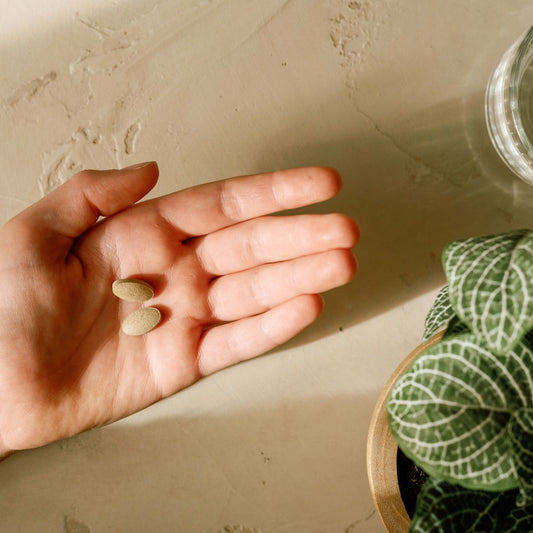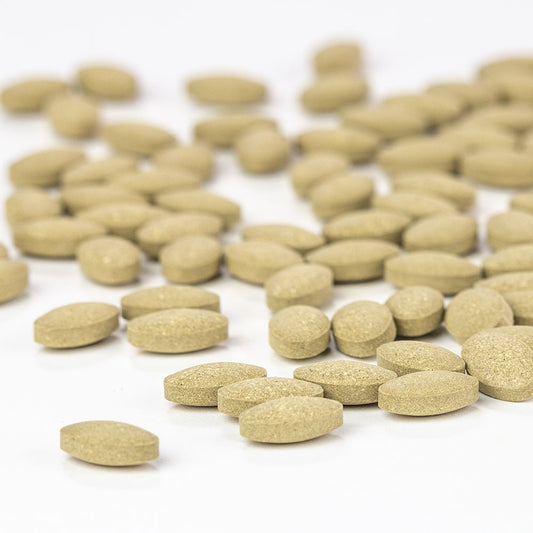Fall is a season of change, movement, and transition. And these energies tend to come with a feeling of uncertainty—a feeling which may be heightened as we face an election year, the lingering effects of a global pandemic, and various forms of upheaval around the world.
In Ayurveda, times of transition and uncertainty are connected to vata dosha.
Vata creates movement in your body, the mind, and the environment.
During the autumn season, we can see this mirrored all around us as the wind blows the dried leaves off of the trees, the days get shorter, and the nights become colder.
In our bodies and minds, we may experience the movement of vata as more dryness, more restless energy, increased emotionality, and a general feeling of anxiousness.
In addition, the energy of vata can also cause depletion. After the abundance of the harvest, nature gets stripped down to its most basic bare bones. Everything goes internal and hibernates. There's a big shift from the fun, outward excitement of the summer sunshine and lots of extroverted play.
Our energy subtly turns internal and our inner experience becomes more heightened.
Think about standing out in the cold wind with bare skin. You'd become uncomfortably chilly, likely feeling exposed and vulnerable. If you stand there too long your skin will get rough and dry.
There's an emotional experience that goes along with this physiological and environmental equivalent—callousness, rigidity, confusion, anxiousness, overwhelm, even fear.
These are all signs of excess vata in the mind and emotions.
For many, this can create an added layer of anxiousness and emotionality, on top of what we may already be feeling simply in response to living as a human on a rapidly changing planet.
Having self-compassion during these times is essential. Having practical Ayurvedic tools to balance vata is extremely helpful as well.

Bringing Balance and Peace
Ayurveda offers many great ways to balance vata in both the mind and body. One approach, for example, includes warm food, warm oil massage, and drinking warm, nourishing herbal drinks.
This works to balance excess vata on the physical level. We can see a similar thing happening in nature as squirrels start harvesting falling acorns and filling up on oils and proteins to sustain them through the winter.
In addition to the physical practices you can do to balance your body this time of year, there are also energetic practices that balance the mind and nervous system.
One such simple yet transformative practice is working with the breath.
Breathwork, or pranayama, is a powerful way to activate a parasympathetic nervous system response—the aspect of your nervous system that helps you feel calm and safe.
The Power of Bhramari Pranayama
One of the best energetic practices you can do to reduce excess vata in the fall is Bhramari Pranayama, or Humming Bee Breath. This practice helps soothe and relax the mind, and in turn the physical body.
Bhramari Pranayama can even help release tension and neutralize some of the angst and anxious feelings that come up when we're faced with more darkness outside, an experience that often invites uncomfortable internal emotions to rise to the surface.
This practice is known to release endorphins, put you in a state of upliftment, and create a sense of inner peace.
It helps you connect to the "hum" of the universe—the timeless connection you have to eternal peace. Simply by working with your breath, you can plug in and connect to an energy greater than you alone.
This practice also helps you withdraw your senses, giving a buffer from the many demands of the outside world in the form of grocery lists, holiday plans, the kids' schedules, your own schedule, and so on.
Instead, you reconnect with that place within you that's beyond doing, and remember a deeper sense of being.
What would your daily life be like if you felt connected to a deep-rooted sense of calm and peace? What decisions would you make? What would you fight for? What would you release?
After the first practice, you will likely experience a feeling of calm, grounding, and centeredness.
Over time, build towards practicing once each morning. It only takes a few minutes to complete one round. I promise the accumulative benefits will far outweigh the five minutes it takes to perform this simple exercise.
Learning the practice is simple—just follow the step-by-step instructions for Bhramari Pranayama (and be sure to read when this pranayama isn't recommended, which you will also find with the instructions).
May this simple and transformative practice bring you a sense of peace, spacious and awareness, and deep trust in the mysterious unfolding of life.













